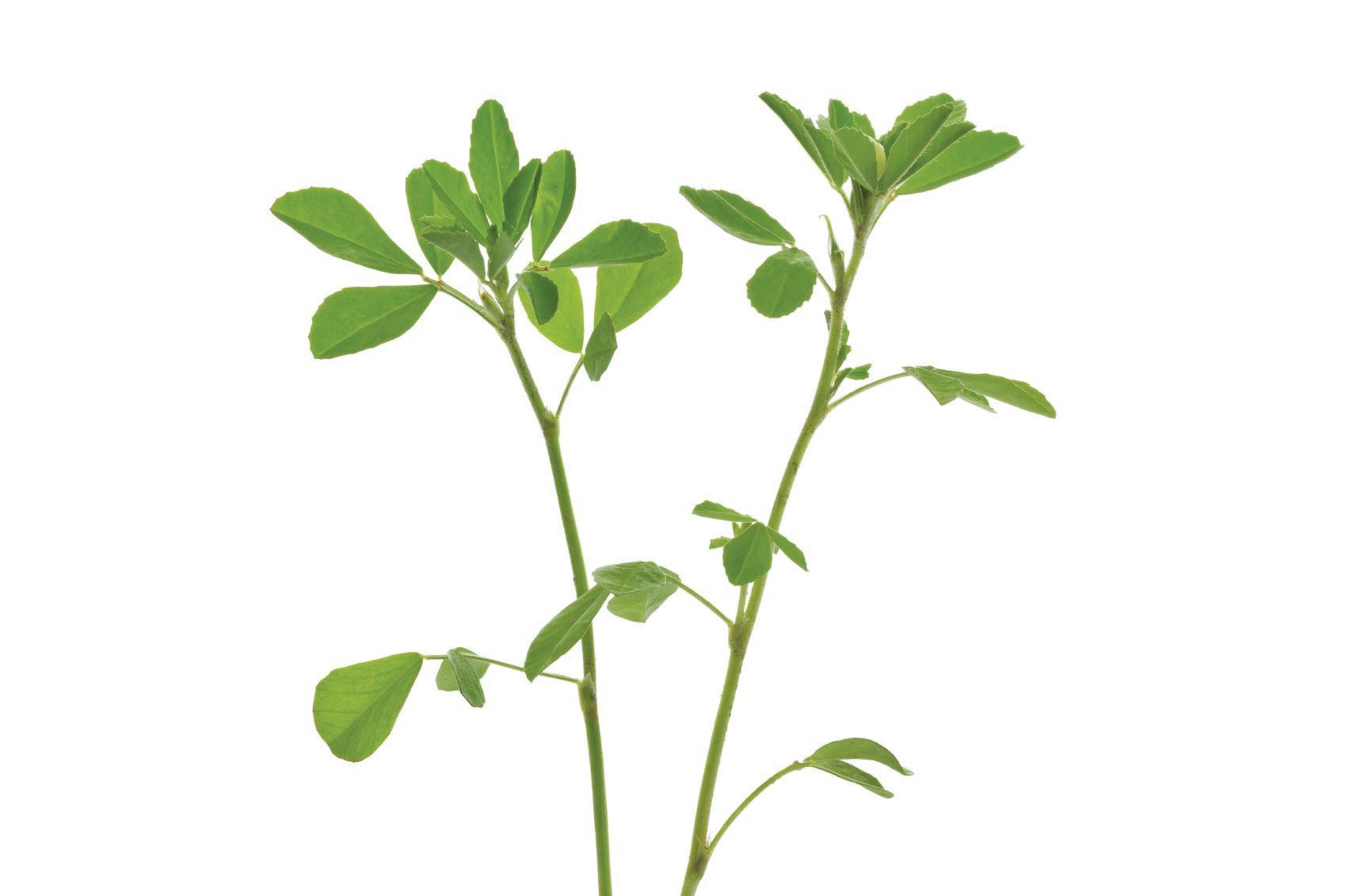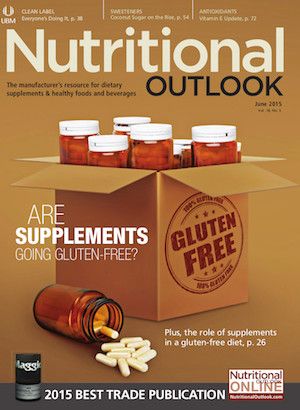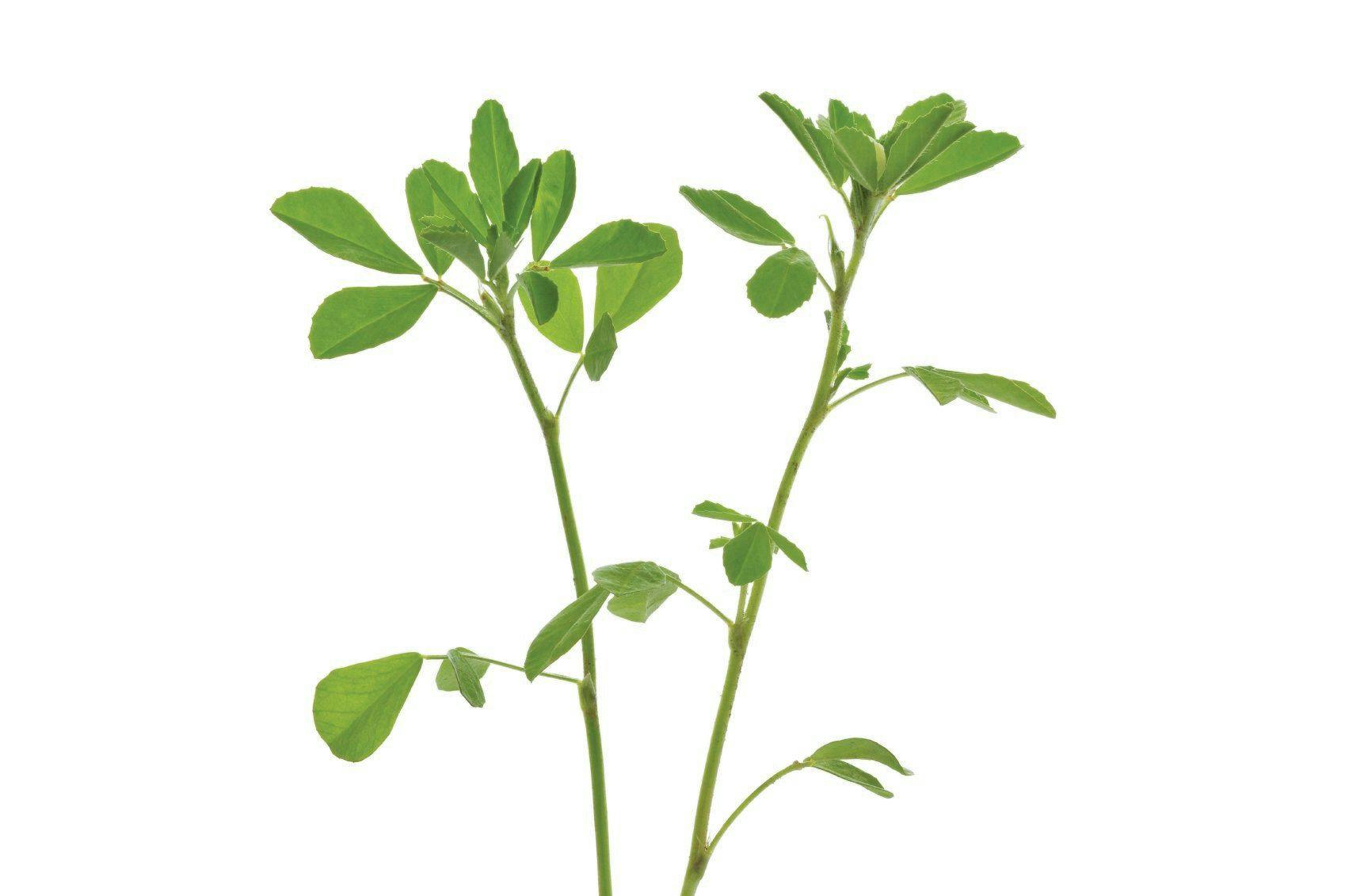Blood Sugar Supplements: Postprandial Power
Fenugreek and chitosan take on blood sugar in new research.

Researchers estimate that by the year 2050, one in five adults globally will be diabetic.1 According to the latest U.S. Centers for Disease Control statistics published in the 2014 National Diabetes Statistics Report, more than 29 million Americans-9.3% of the U.S. population-already have diabetes.2 Even more staggering, more than 86 million American adults-more than one in three adults-have prediabetes, a condition in which fasting glucose or glycosylated hemoglobin (HbA1c) levels are high but don’t quite yet meet the criteria for diabetes.3
These numbers are more than alarming. Diabetes is a significant risk factor for many disease conditions. In the realm of blood vessel health, people with diabetes are at increased risk of vascular dysfunction and artery calcification. Emerging research indicates that individuals with prediabetes are at increased risk for heart disease, as well. A recently published study led by Valmore Bermudez and colleagues from Spain and Venezuela analyzing data from 1,378 subjects included in the Maracaibo City Metabolic Syndrome Prevalence Study found increased coronary risk in individuals with impaired levels of fasting glucose.1 The authors also point to further research showing that restoration of normal blood sugar levels in prediabetic individuals reduces risk of heart disease.1
Blood sugar and insulin regulation determine other health parameters, as well. Take cognitive function. Recent studies suggest those with insulin resistance and impaired glucose balance are at higher risk for the development and progression of brain health issues, including Alzheimer’s disease.4 An interesting line of current research for Alzheimer’s prevention involves testing therapies that normalize blood sugar and insulin function.
An additional significant risk factor associated with poorly regulated blood sugar levels is the occurrence of post-meal sugar spikes, or postprandial hyperglycemia. This is a significant elevation of blood sugar shortly after food intake that the body is incapable of lowering in a short amount of time because of insulin resistance.
Studies suggest that postprandial hyperglycemia significantly affects overall blood sugar control, as indicated by its influence on HbA1c levels. HbA1c is a common measurement that provides a snapshot of average blood glucose control over the prior three months. A recent investigation by Xin Kang and colleagues from Sichuan University in Chengdu, China, found that, in people with mildly elevated blood sugar levels, the contribution of postprandial blood sugar spikes to HbA1c readings can be upwards of 50%.5 Furthermore, studies indicate that post-meal sugar spikes are an independent risk factor for atherosclerosis and significantly contribute to vascular endothelial cell damage, even more so than constantly elevated blood sugar.6
Given all of the risks associated with unhealthy blood sugar levels, managing the risks through dietary and lifestyle interventions not only makes sense but is necessary. In 2012 alone, the direct medical costs for diabetes amounted to an estimated $176 billion,2 further highlighting the need for preventive strategies, including a healthy diet and lifestyle. Safer alternative therapies are also required, as many of the conventional approaches carry the risk of significant side effects. In this realm, herbs and other natural ingredients continue to shine and show their promise as effective measures for blood sugar management and for blunting dangerous post-meal blood sugar spikes, offering both therapeutic and preventive benefits for diabetes and prediabetes.
Two such natural ingredients highlighted in recent research include the herb fenugreek and low-molecular-weight chitosan.
Fenugreek
Fenugreek (Trigonella foenum-graecum) is a culinary herb with wide use in India, China, and the Middle East. It has garnered traditional notoriety as an herb that lowers blood sugar levels, and it offers other health benefits. The seeds are rich in fiber and contain several active compounds, including saponins, diosgenin, and 4-hydroxyisoleucine. Animal and human studies have shown that fenugreek offers significant benefits for supporting healthy blood sugar levels by acting on multiple fronts.
Ina meta-analysis reviewing evidence from human trials on the effect of fenugreek seeds on parameters of blood sugar control, Nithya Neelakantan and colleagues from the National University of Singapore concluded that clinical trials support the benefits of fenugreek seeds for glycemic control.7 Their analysis consisted of 10 clinical trials comparing single-herb preparations of fenugreek with placebo or no treatment and included trials evaluating its effects on fasting blood glucose levels, two-hour postprandial glucose levels, HbA1c, or fasting serum insulin levels. In terms of fasting blood sugar levels, the results of the meta-analysis revealed that, on average, a decrease of 0.96 mmol/l (~18 mg/dl) was seen in groups treated with fenugreek as compared to control. The authors also noted a dose-dependent effect of fenugreek, as the amount administered in the studies reviewed varied significantly. The studies using doses greater than 5 g showed the most significant effects on fasting blood sugar levels.
With regard to two-hour postprandial levels of blood sugar, the average reduction from the trials was 2.19 mmol/l (or nearly 40 mg/dl) with fenugreek. Furthermore, three of the 10 studies reported reductions in HbA1c levels with fenugreek that averaged 0.85% compared with control treatments. The authors concluded that, while additional larger studies are required to validate these results, fenugreek is a promising complementary option for the clinical management of diabetes.
Researchers from Universiti Sains Malaysia in Kelantan, Malaysia, led by Sathyasurya Daniel Robert, conducted a study to determine the effect of fenugreek on postprandial blood sugar response.8 Fourteen overweight or obese individuals were included in the trial and were studied following overnight fasts on four separate occasions. The participants were given 50-g carbohydrate portions of white bread and jam or fried rice, both with and without 5.5 g of fenugreek. Their blood sugar responses were monitored for two hours. The results of the study showed that incorporation of fenugreek seed powder in the test foods blunted the surge in postprandial blood sugar levels and increased satiety in the subjects. Reductions of 14.4 mg/dl and 27 mg/dl were noted at 45 and 60 minutes after consumption of the white bread/jam plus fenugreek combination as compared to the white bread and jam alone, indicating the ability of fenugreek to significantly lower postprandial blood sugar spikes.
Fenugreek contains multiple compounds with blood sugar–lowering potential, including saponins and fiber. However, some recent research into the mechanism of action of diosgenin, a steroid sapogenin contained in fenugreek, has yielded some interesting insights. In the first study, diabetic rats fed a high-fat diet for 30 days were also administered diosgenin.9 Treatment with diosgenin was found to significantly reduce the increase in body weight seen in the same rats not given diosgenin. In addition, disogenin significantly normalized the elevated blood sugar levels and elevated insulin levels, while reducing insulin resistance, all of which are hallmarks in diabetic rats.
A second study, also in diabetic rats, looked at the effects of diosgenin on certain key carbohydrate metabolic enzymes that impact the body’s ability to regulate blood sugar control.10 In the study, the administration of diosgenin led to substantial decreases in blood sugar and increases in insulin levels in the diabetic rats. The researchers found that diosgenin increased the activity of hexokinase, leading to increased glycolysis (the breakdown of glucose to pyruvate ultimately used in energy production). Diosgenin also led to decreased activity of glucose-6-phosphatase and fructose-1,6-bisphosphatase, leading to lowered blood sugar levels. By modulating these important metabolic enzymes, key compounds in fenugreek are able to support healthy blood sugar metabolism.
Low-Molecular-Weight Chitosan
Chitosan is a polysaccharide derived from chitin, the material that comprises the exoskeletons of crustacean shellfish. It consists of randomly distributed molecules of D-glucosamine and N-acetyl-D-glucosamine. Studies suggest that chitosan has benefits for blood pressure, healthy cholesterol, and weight management. Recent research indicates that a low-molecular-weight chitosan oligosaccharide, which is produced from the enzymatic digestion of chitosan, has a beneficial impact on blood glucose management. This ingredient is branded as Orisett by Nutragenesis LLC (Brattleboro, VT). The low-molecular-weight chitosan oligosaccharide is readily absorbed into the bloodstream with oral administration and thus has significant advantages over other forms of chitosan.11
Sung-Hoon Jo and colleagues from Korea and the United States investigated the effects of three different molecular-weight samples of chitosan oligosaccharide in vitro for their ability to inhibit carbohydrate-digesting enzymes, and in vivo in rats for the ability to reduce postprandial blood sugar levels.11 When the activity of the chitosan oligosaccharide samples on the inhibition of both alpha-amylase and alpha-glucosidase were measured, the investigators concluded that all three samples, regardless of molecular weight, inhibited these enzymes equally well.
Because these enzymes are responsible for breaking down large starch molecules into smaller sugars, the inhibition of these enzymes in the digestive tract leads to a reduction in sugar absorption into circulation. In the second phase of the study, rats were administered a sucrose solution along with one of the three chitosan samples or acarbose, a diabetes drug that acts as an inhibitor of alpha-glucosidase. The study also included a control group. The results showed that all treatment groups had blunted blood glucose responses when compared to the control group. Of the three chitosan samples, sample one (the lowest-molecular-weight sample with a molecular weight of <1000 Daltons) reduced blood glucose levels the most, leading to a reduction of 14.3% after one hour. Based on these results, the authors postulate that low-molecular-weight chitosan has a dual effect on blood sugar management by acting at the gastrointestinal level to inhibit carbohydrate-digesting enzymes, as well as at the cellular level by aiding glucose absorption into muscle tissue and fat cells.
Two recently published studies on low-molecular-weight chitosan establish the blood sugar–lowering benefits in humans. The first trial was an acute dosing study in which the research group led by Sung-Hoon Jo assessed the impact of a single 500-mg dose of low-molecular-weight chitosan on postprandial blood sugar levels in 13 healthy individuals with an average age of 28.9 years.12 On day one of the study, the researchers conducted a control test in which the volunteers consumed a sucrose solution and had their blood glucose levels monitored at the beginning of the experiment (0 minutes) and at 30 minutes, 1 hour, 1.5 hours, and 2 hours following sucrose consumption. On the second day of the study, participants consumed 500 mg of the low-molecular-weight chitosan 20 minutes prior to consuming 75 g of sucrose in 200 ml of distilled water. Blood samples were taken at 0 and 30 minutes, as well as at 1, 1.5, and 2 hours after consumption of the sugar solution. At 30 and 90 minutes after sucrose consumption, low-molecular-weight chitosan intake decreased postprandial blood sugar levels by 13% and 14%, respectively, versus control measurements taken on day one. Thus, low-molecular-weight chitosan was effective at significantly reducing post-meal glucose spikes.
A second study led by Hee Jun Kim of Yonsei University in Seoul, South Korea, was a 12-week randomized double-blind placebo-controlled trial.13 Sixty individuals aged 20-75 with prediabetes (fasting blood sugar levels between 100 and 125 mg/dl and two-hour oral glucose tolerance test readings of 140 mg/dl or greater) were enrolled in the study.
Individuals in the treatment group consumed 1500 mg of the low-molecular-weight chitosan daily in divided doses before each meal, while the placebo group consumed an equivalent amount of roasted barley meal powder. Study subjects were instructed to maintain their usual diet and physical activity during the 12-week study period. A two-hour oral glucose tolerance test was performed at baseline and at the end of 12 weeks. HbA1c, adiponectin levels, and pro-inflammatory cytokines were also assessed at baseline and at 12 weeks. While no change was noted in serum insulin levels before and after treatment with low-molecular-weight chitosan, blood glucose levels were significantly lowered at 30 and 60 minutes in the oral glucose tolerance test versus baseline levels. In addition, HbA1c decreased significantly in the test group versus the placebo group. The inflammatory cytokine IL-6 decreased significantly with treatment, while TNF-alpha also tended to decrease, indicating a reduction of inflammation. Plasma levels of adiponectin, a hormone modulating blood sugar regulation and fatty acid oxidation, showed significant increases with low-molecular-weight chitosan after 12 weeks, a finding associated with better insulin sensitivity and reduced risk of type 2 diabetes.
The results of both human studies described here point to substantial benefits of low-molecular-weight chitosan for reducing post-meal spikes in blood sugar levels, better overall blood sugar control, as well as the ability to reduce inflammation-all positive signs for diabetes prevention.
Turning to Natural Alternatives
With the ever-increasing prevalence of prediabetes and diabetes as well as their related complications, research into preventive options should be front and center. Given the enormous healthcare burden and costs associated with diabetes, and given the impact on quality of life, implementing natural alternatives that show effectiveness in managing healthy blood sugar levels, and specifically post-meal elevations in blood sugar, should be a strong consideration in addition to beneficial dietary and lifestyle tools.
Also read:
Who Is the Blood Sugar-Management Dietary Supplement Customer?
New Tactic for Weight Management: Blood Sugar Control
Photo: Recent research into the mechanism of action of diosgenin, a steroid sapogenin contained infenugreek, yields interesting insights. Photo © iStockphoto.com/PicturePartners
References
- Bermúdez V et al., “Coronary risk estimation according to the Framingham-Wilson Score and impaired fasting glucose in adult subjects from Maracaibo City, Venezuela,” Global Journal of Obesity, Diabetes and Metabolic Syndrome, vol. 1, no. 1 (October 24, 2014): 20–29
- National Diabetes Statistics Report, 2014. Centers for Disease Control and Prevention, National Center for Chronic Disease Prevention and Health Promotion, Division of Diabetes Translation. www.cdc.gov/diabetes/pubs/statsreport14/national-diabetes-report-web.pdf. Accessed May 7, 2015. Updated link as of April 24, 2018: https://www.cdc.gov/diabetes/pdfs/library/diabetesreportcard2014.pdf
- “Prediabetes: Could It Be You?” (2014). Centers for Disease Control and Prevention. www.cdc.gov/diabetes/pubs/images/prediabetes-inforgraphic.jpg. Accessed May 7, 2015
- Kim B et al., “Insulin resistance as a key link for the increased risk of cognitive impairment in the metabolic syndrome,” Experimental and Molecular Medicine. Published online March 13, 2015
- Kang X et al, “Contributions of basal glucose and postprandial glucose concentrations to hemoglobin A1c in the newly diagnosed patients with type 2 diabetes-the preliminary study,” Diabetes Technology & Therapeutics. Published online ahead of print March 31, 2015
- Maeda M et al., “Intermittent high glucose implements stress-induced senescence in human vascular endothelial cells: role of superoxide production by NADPH oxidase,” PLoS ONE. Published online April 16, 2015
- Neelakantan N et al., “Effect of fenugreek (Trigonella foenum-graecum L.) intake on glycemia: a meta-analysis of clinical trials,” Nutrition Journal. Published online January 18, 2014
- Robert SD et al., “Trigonella foenum-graecum seeds lowers postprandial blood glucose in overweight and obese individuals,” Journal of Nutrition and Metabolism. Published online September 3, 2014
- Naidu PB et al., “Diosgenin reorganises hyperglycaemia and distorted tissue lipid profile in high-fat diet-streptozotocin-induced diabetic rats,” Journal of the Science of Food and Agriculture. Published online ahead of print December 22, 2014
- Saravanan G et al., “Modulatory effects of diosgenin on attenuating the key enzymes activities of carbohydrate metabolism and glycogen content in streptozotocin-induced diabetic rats,” Canadian Journal of Diabetes, vol. 38, no. 6 (December 2014): 409–414
- Jo SH et al., “Molecular weight dependent glucose lowering effect of low molecular weight chitosan oligosaccharide (GO2KA1) on postprandial blood glucose level in SD rats model,” International Journal of Molecular Sciences, vol. 14, no. 7 (July 9, 2013): 14214–14224
- Jo SH et al., “The reduction effect of low molecular weight chitosan oligosaccharide (GO2KA1) on postprandial blood glucose levels in healthy individuals,” Food Science and Biotechnology, vol. 23, no. 3 (June 2014): 971–973
- Kim HJ et al., “The effects of chitosan oligosaccharide (GO2KA1) supplementation on glucose control in subjects with prediabetes,” Food and Function, vol. 5, no. 10 (October 2014): 2662–2669


.png&w=3840&q=75)

.png&w=3840&q=75)



.png&w=3840&q=75)



.png&w=3840&q=75)























